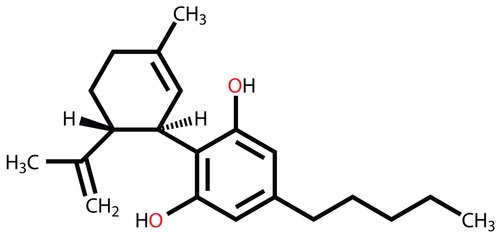General, Health lifestyle
5 important cannabinoids and what they can do!
Cannabinoide sind chemische Verbindungen die hauptsächlich in den Hanfplanzen “Cannabis Sativa” und “Cannabis Indica” vorkommen. Die verschiedenen Cannabinoide binden an Cannabinoid Rezeptoren an und verändern so die Gehirnaktivität. Ihre Wirkung entfalten sie durch die Ähnlichkeit zu körpereigenen Substanzen, die verschiedene Teile des Körpers regulieren wie z.B. das Immunsystem, die Stimmung, den Hunger und das Schmerzempfinden. Über 80 verschiedene Cannabinoide wurden bis jetzt in der Hanfplanze nachgewiesen. Viele davon sind noch gänzlich unerforscht. Doch Cannabinoide sind nicht nur in der Cannabispflanze zu finden sondern auch als “natürliche Cannabinoide” oder Endocannabinoide bezeichnete Botenstoffe in unseren Körpern. Wie sich pflanzlich produzierte Cannabinoide in unserem Endocannabinoid System auswirken ist ebenfalls noch unerforscht und rückt mit der Legalisierung von Cannabis in verschiedenen Ländern immer mehr in den Fokus von Wissenschaftlerinnen.
The cannabinoid receptors
When cannabinoids from the cannabis plant enter our bloodstream through consumption, they bind to endocannabinoid receptors found in many parts of the body. All these receptors together are called the endocannabinoid system. This system is currently considered the fourth most important regulatory apparatus and helps other systems in the body to function more efficiently and better. The body's receptors come in two types: CB1 and CB2. CB1 receptors are largely found in the central nervous system and brain. There, especially in the hippocampus and cerebellum. These receptors play an important role in mood, memory, sleep, appetite and pain perception. On the other side are the CB2 receptors, which are also found in the brain but also in the digestive system, the peripheral nervous system and the immune system. In immune cells, they cause a reduction of inflammation. Therefore, it is assumed that stimulation of this receptor can have a therapeutic effect on diseases. The different types of cannabinoids have different effects. Here is an overview of the best-known ones:
THC - Tetrahydrocannabinol
Das wohl bekannteste und am besten erforschte Cannabinoid ist das THC, die Kurzform für Tetrahydrocannabinol. Es ist für die psychoaktive Wirkung, das “High”, verantwortlich und wird oft als Genussmittel konsumiert. Daher hat sich die Wissenschaft bisher am meisten mit THC beschäftigt und herausgefunden, dass es geeignet ist für die Behandlung von chronischen Schmerzen und Muskelverkrampfungen. Patienten mit medizinischem Cannabis berichten, dass regelmäßiger Konsum die psychoaktive Wirkung schrittweise vermindert und lediglich die symptomatische Linderung bleibt.
CBD - Cannabidiol
Das zweite sehr bekannte Cannabinoid ist Cannabidiol. Die öffentliche Meinung ist weit besser über CBD, da es nicht psychoaktiv ist. In vielen Staaten ist oft nur THC verboten und CBD erlaubt, wie z.B. in Österreich. Seine medizinische Wirkung ist weniger erforscht, jedoch wird es meistens bei den selben Krankheiten verwendet, für die auch THC genutzt wird. Da das “High” bei Verwendung fehlt, wird es auch für die Behandlung von Kindern eingesetzt, vor allem in Bereichen wie Krebs und Epilepsie. Mittlerweile gibt es sogar schon eigens gezüchtete CBD Hanfpflanzen, deren THC Anteil fast nicht mehr vorhanden ist und diese daher in vielen Staaten legal sind.
CBC - Cannabichromes
CBC, or cannabichromene, is a little-known cannabinoid that is often used together with CBD. It does not have a psychoactive effect and is therefore legal. Its uses are mainly to inhibit inflammation, as an antifungal, to treat tumours and as an antidepressant. CBC has antibacterial and sedative effects and contributes to bone health. It also stimulates brain growth and can therefore possibly be used for Alzheimer's disease. Tropical cannabis strains in particular have large amounts of CBC.
CBG - Cannabigerol
Primarily in the early growth phases of the hemp plant, CBG is found in large quantities. It is also non-psychoactive and acts as an antifungal agent and can also be used to treat psoriasis and other skin problems. It is also said to be appetite stimulant and beneficial for emotional well-being. It is possible that CBG is more effective than THC in pain management.
THCV - Tetrahydrocannabivarin
THCV is like THC, psychoactive, but only with about 20% of the potency. It is thought that THCV may attenuate the negative psychoactive effects of THC. It has already been used as an anticonvulsant and also has a neuroprotective, appetite-suppressing and metabolism-stimulating effect.


